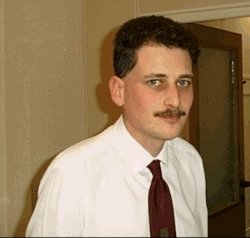Whose On: Chris Camilleri
 Chris
Camilleri is the Systems Administrator of one of Malta’s leading building societies.
Technology, like human resources, is paramount to the successful performance of this
company and they are managing this impressively with M.
Chris
Camilleri is the Systems Administrator of one of Malta’s leading building societies.
Technology, like human resources, is paramount to the successful performance of this
company and they are managing this impressively with M.
How did you discover M?
Our first ‘M’ systems were actually written in MIIS. We were amongst the first companies here in Malta to go for this development environment. It served our business strategy well at the time and as our business strategies changed (becoming more complex) M was a natural path to take. It serves us well and from the technological aspect, we are able to meet the requirements of our business strategies.
What is your opinion of M?
From a performance issue, I think that M is in a class of its own. You can run a medium sized company on a glorified PC and still attain very good performance. The expansion capabilities are also very impressive. Plugging a new server, a networked PC or dumb terminals (the latter are heading towards extinction) are equally simple. The fact that Micronetics port MSM to practically all the important platforms gives me piece of mind and I can rest assured that in the future shifts would soon after have a version of M for them. We have come a long way with this environment mainly because it allowed us to retain our investments in software plus provided us with the means to expand. Today we are evaluating the NT platform (we have a dual Pentium II machine), we are expanding on MSM-SQL and very importantly, we are working to get the first systems up with a GUI interface using MSM-Workstation.
What would you criticise about M?
There was a time when I felt that M had ceased completely to exist and all that remained were people who were unlucky enough to already have system developed in this language. While new development tools appeared on the market everything was immobile on the M front. I think M lost a lot of ground during this period. New customers would not be interested in old technology and those that didn’t have a large investment in this language were simply shifting to something else. As a result, I think that M lost quite a lot of small customers because of this stagnation. Medium and large companies were, when contemplating new developments, at a dilemma about whether the balance should weight towards the development tools and methodologies of other languages or the efficient databases and existing software base.
How do you see the future of M?
The times are changing and although products still have some way to go, I believe that M vendors will work doubly hard to retain their existing base while at the same time increasing their customer base. This can only be achieved by providing new releases of the development environment in rapid succession. Given the recent revival in the art of being dynamically innovative will, I feel, make an already great development environment a better one. The M world needs more GUI objects, OOP, together with add-on toolkits that allow developers to build M products the way they want and the way they like.
It depends on the price I have to pay. If it can be achieved at close to zero costs, they I wouldn’t mind having it. If, on the other hand. it means that new features get introduced when everyone else is neck deep in them, then I think I would prefer to not have the standard and have the tools.
Contact Information |
| Chris Camilleri e-mail: Contact through MWM |

